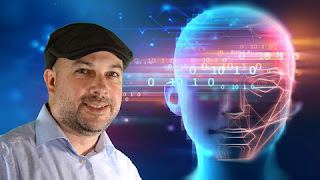How to create recommendation systems with deep learning, collaborative filtering, and machine learning.
This course includes:
- 10.5 hours on-demand video
- 4 articles
- Full lifetime access
- Access on mobile and TV
- Certificate of completion
What you'll learn
- Understand and apply user-based and item-based collaborative filtering to recommend items to users
- Create recommendations using deep learning at massive scale
- Build recommender systems with neural networks and Restricted Boltzmann Machines (RBM's)
- Make session-based recommendations with recurrent neural networks and Gated Recurrent Units (GRU)
- Build a framework for testing and evaluating recommendation algorithms with Python
- Apply the right measurements of a recommender system's success
- Build recommender systems with matrix factorization methods such as SVD and SVD++
- Apply real-world learnings from Netflix and YouTube to your own recommendation projects
- Combine many recommendation algorithms together in hybrid and ensemble approaches
- Use Apache Spark to compute recommendations at large scale on a cluster
- Use K-Nearest-Neighbors to recommend items to users
- Solve the "cold start" problem with content-based recommendations
- Understand solutions to common issues with large-scale recommender systems
Description
New! Updated for Tensorflow 2, Amazon Personalize, and more.
Learn how to build recommender systems from one of Amazon's pioneers in the field. Frank Kane spent over nine years at Amazon, where he managed and led the development of many of Amazon's personalized product recommendation technologies.
You've seen automated recommendations everywhere - on Netflix's home page, on YouTube, and on Amazon as these machine learning algorithms learn about your unique interests, and show the best products or content for you as an individual. These technologies have become central to the largest, most prestigious tech employers out there, and by understanding how they work, you'll become very valuable to them.
We'll cover tried and true recommendation algorithms based on neighborhood-based collaborative filtering, and work our way up to more modern techniques including matrix factorization and even deep learning with artificial neural networks. Along the way, you'll learn from Frank's extensive industry experience to understand the real-world challenges you'll encounter when applying these algorithms at large scale and with real-world data.
Recommender systems are complex; don't enroll in this course expecting a learn-to-code type of format. There's no recipe to follow on how to make a recommender system; you need to understand the different algorithms and how to choose when to apply each one for a given situation. We assume you already know how to code.
However, this course is very hands-on; you'll develop your own framework for evaluating and combining many different recommendation algorithms together, and you'll even build your own neural networks using Tensorflow to generate recommendations from real-world movie ratings from real people. We'll cover:
- Building a recommendation engine
- Evaluating recommender systems
- Content-based filtering using item attributes
- Neighborhood-based collaborative filtering with user-based, item-based, and KNN CF
- Model-based methods including matrix factorization and SVD
- Applying deep learning, AI, and artificial neural networks to recommendations
- Session-based recommendations with recursive neural networks
- Scaling to massive data sets with Apache Spark machine learning, Amazon DSSTNE deep learning, and AWS SageMaker with factorization machines
- Real-world challenges and solutions with recommender systems
- Case studies from YouTube and Netflix
- Building hybrid, ensemble recommenders
This comprehensive course takes you all the way from the early days of collaborative filtering, to bleeding-edge applications of deep neural networks and modern machine learning techniques for recommending the best items to every individual user.
The coding exercises in this course use the Python programming language. We include an intro to Python if you're new to it, but you'll need some prior programming experience in order to use this course successfully. We also include a short introduction to deep learning if you are new to the field of artificial intelligence, but you'll need to be able to understand new computer algorithms.
High-quality, hand-edited English closed captions are included to help you follow along.
Also See : Machine Learning in Python Bootcamp with 5 Capstone Projects



![Adobe Illustrator Complete Mega Course - Beginner to Advance [Free Online Course] - TechCracked](https://blogger.googleusercontent.com/img/b/R29vZ2xl/AVvXsEiASXm2fgxNVSKM9zvBhbgzxFXu6ts8CvSE9UAvqjUEbJQShKb13MFG5UbdO_B-npvqDT-ZAIMbscWMeZ6A2UqmS7iZtuc2k8GgeM3cpTtTvpzX5otrq9Q41Q4SLFJ02IvsCvDPn058Xl_J5AxGQHTsL78PYeIfhYhy7ihzHa3hGT1GfxTjYj5iP1QMmMf0/w680/5167888_4abc.jpg)
![The Front-End Web Developer Bootcamp: HTML, CSS, JS & React [Free Online Course] - TechCracked](https://blogger.googleusercontent.com/img/b/R29vZ2xl/AVvXsEi-liqG6iOnuy2uidEUUlnlSkoZgl7zkslJHhAAqeFO3WpLYiwbVePyEhz54n2L41_QKtFwPhUtGdDTIMy5DeMrYg3SZHPVTuF87ZTPE3nwx-65hQ8XnWIFAFEBS2I03fWUG8l0HOEkvxI5hKAI3KES2Ljo55GTBBO70y1GS1pOXWiT_Dtd83w083pfokdR/w680/5178116_6858.jpg)
![Python for OOP: The A-to-Z OOP Python Programming Course [Free Online Course] - TechCracked](https://blogger.googleusercontent.com/img/b/R29vZ2xl/AVvXsEj7YVC9zzwr_YlBw0W2qGKy0e_bK4UShyphenhyphen-mayonwl9bkXUJSMCZqhPhast4Jm1Dwq4vvXZ2lOhZzT3UPCm3G_uDqzBpquJDwrbhwYnCPlmdevz7b6NGYizoTAjcx-aSJv7DIb5ctPYutLtKSpY_89rvbQ1AyBOUYPdBx9SqaxpYxTtXuQSUoyZqCk-xnNCl/w680/IMG_20240309_101112_417.jpg)
![Complete Blender Megacourse: Beginner to Expert [Free Online Course] - TechCracked](https://blogger.googleusercontent.com/img/b/R29vZ2xl/AVvXsEhb2o5jZjlRK8wp7RXeRMgZjfFlAz7TY5Mqd_zhRZMu2AEnG9yx5ZcSo1i5c_LWQtGxDCU7EusL_7WLU8RRjRkJ-4OczzznyEhkkY7ue7ILpxCqyhESnfYuxXNGsVTSHqka5QgqY5xeP-_jr47LSKPK0mbiG1KsHzgZ-S_3gem7GfFdp7RQpU1QlxaoQQ/w680/IMG_20220618_092204_369.jpg)
![Complete Ethical Hacking Masterclass: Go from Zero to Hero [Free Online Course] - TechCracked](https://blogger.googleusercontent.com/img/a/AVvXsEi5_Gj33qgcH0q4PHHXS3H-IcO_YNEtooXdfxAh3Hhn8JV9IT98jAiydZgazCxmZIpZ0ztx3vv13wQneGAI89qj6yeDL7YpMjiWrRHh3_yoaBlnSdYw0fVUry_4qGdxatyxx1uWJPKaguCEg7avNryrPUcehxaxzRcFjw-cpkFOblLGdSVmrzL4e0v6IfsW=w680)